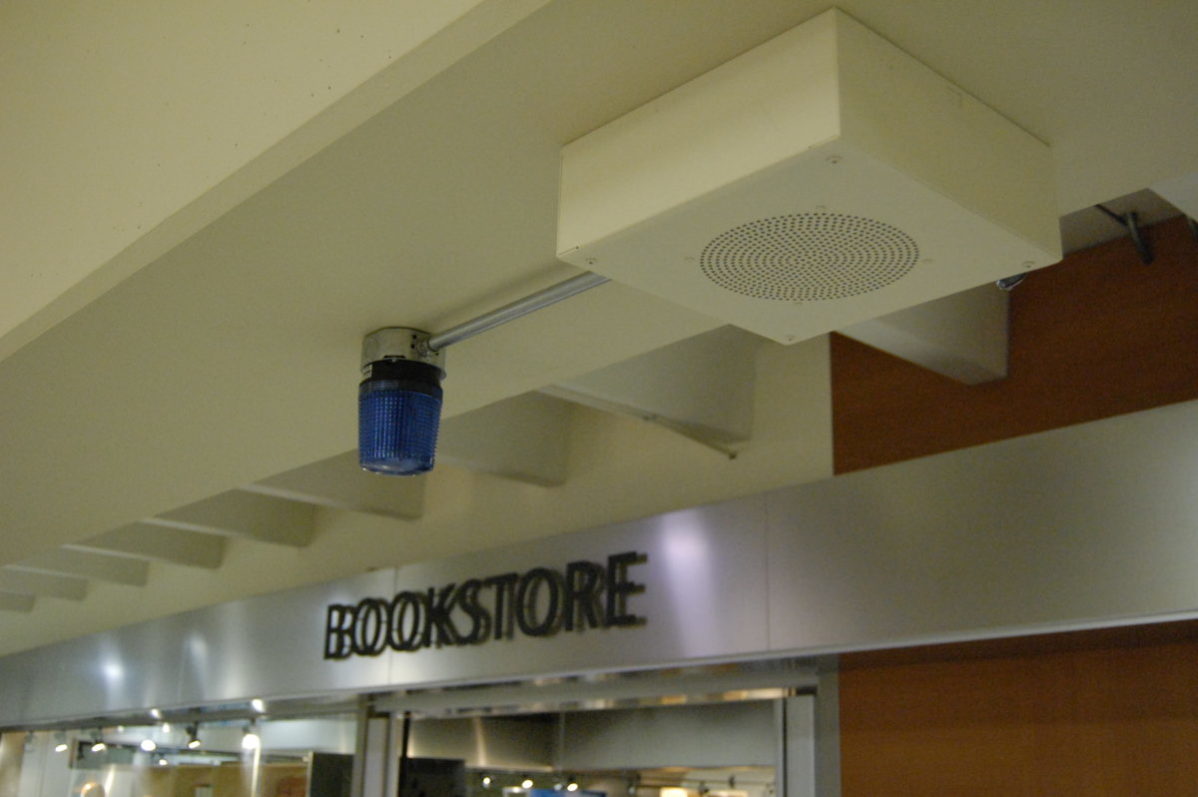Emergency planner Kevin Ferguson hired following bumpy 2016 lockdown
On April 6, 2016, the routine Wednesday morning bustle of George Brown College’s (GBC) Casa Loma campus was shattered by a scream.
One student had just attacked another with a knife, and a lockdown was put in place at Casa Loma until the assailant was caught and the situation contained. While nobody was seriously injured, the school’s emergency response was far from perfect, and GBC has worked hard ever since to prevent a repeat of that day.
Emergency planning for an institution as large as GBC is a full-time job, and Kevin Ferguson is the college’s point-man for this vital task. In the wake of the April 6 lockdown and following criticism of the school’s response to the crisis, Ferguson was hired to overhaul the school’s emergency management protocols and resources.
“At that time, there were a few problems with the emergency notification system,” Ferguson said. “One, not all the classrooms had phones.”
During the 2016 lockdown, phones were the primary method of informing students and staff of emergency situations, making for a serious impedance to effective communication. The Dialog’s coverage of the lockdown recorded several instances of students in classrooms failing to receive or comprehend the alert.
In some cases, Ferguson explained, staff with older phones didn’t receive the emergency messages. In other instances, offices that had moved from Casa Loma to Waterfront and St. James received notifications that Casa Loma was on lockdown.
Realizing the vulnerability the existing phone alert system represented, staff of George Brown’s public safety and security office went to work. Older phones were replaced and new ones were provided where they didn’t exist before. In all, more than 400 phones with voice and text announcement capabilities were purchased between the three main campuses, to help avoid the confusion that hindered the 2016 lockdown.
“The lockdown woke up the college to improving early warning systems,” said Ferguson, adding that GBC has been working hard on this matter since last April.
Beyond the phones, other improvements were made, Ferguson said. Staff assignments and numbers were double-checked. PA systems and alert lights were installed in high-traffic areas of Casa Loma and St. James campuses. Multiple emergency protocols covering a range of possible threats were adopted and staff working for both GBC and the Student Association (SA) were trained on how to respond.
George Brown’s public safety and security also teamed with students to make a video on lockdowns.
“Considering it’s been just over a year, we’ve doubled our efforts and actually had compliments from the Toronto police on how fast we’re moving on this,” said Ferguson.
On Jan. 30, 2017, the shooting of Anastasios Leventis just steps from St. James campus put George Brown’s emergency preparedness improvements to the test.
The new emergency protocols adopted were used, and a hold and secure was put in place within minutes of the shooting. As per the college’s emergency response policy, a hold and secure is used when a threat is outside the building, instead of inside.
In comparing 2016’s lockdown with 2017’s hold and secure, Ferguson said, “there were a lot of positive changes. First of all the systems worked, they worked when we turned them on.”
The technical and logistical hang-ups that stood out in 2016 were, Ferguson said, almost entirely smoothed over.
Acknowledging some minor uncertainty, Ferguson added, “everybody knew about the lockdown procedures, but we hadn’t gotten the message out about hold and secure procedures.”
Accordingly, Ferguson is looking at expanding staff training and student awareness on the differences between the four emergency procedures—lockdown, hold and secure, shelter in place, and evacuations—and how to respond effectively.
Ferguson stressed that one of the best ways students can do their part is to familiarize themselves with the various emergency procedures and the protocols they involve. More information can be found on GBC’s Emergency Procedures page.
Keeping an eye on social media during an emergency or incident is another good way to receive very quick knowledge about events as they unfold.
Beyond that, the emergency preparation task is a continuous one. Public address speakers and alert light systems should be added to Waterfront campus in the near future and expanded elsewhere. Ferguson aims to have emergency notifications widely-broadcast in the future through texts, social media, and the digital signage found across the campuses.
And as the future brings new technology and new communications advances, Kevin Ferguson will be working to implement them to keep GBC students and staff safe.
Correction: An earlier version of this article said that some Casa Loma staff didn’t receive messages because they were sent to older, unused extensions. Messages were sent to current extensions, but, in some cases the location of the extensions had moved to St. James and Waterfront campuses.
Clarification: The earlier version also suggested that Ferguson went to work installing new phones around GBC, when it’s more accurate to say that staff of public safety and security office installed the new phones.


